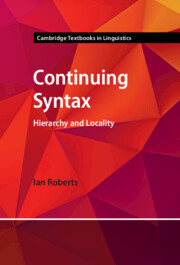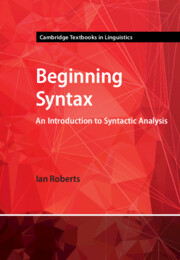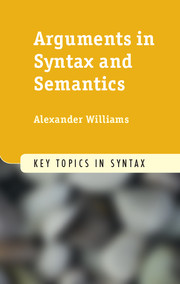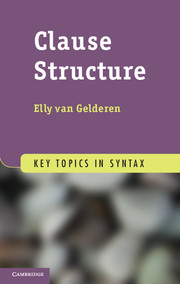Continuing Syntax
A logical and clear exposition of hierarchy and locality by a leading figure in the field, Continuing Syntax takes students from an introductory level of syntactic theory to an understanding of cutting-edge research in the field. A comprehensive range of topics is covered, including configurationality, head-movement, clause structure, nominal structure, subjacency, barriers and phases, ensuring that students have a thorough understanding of all the main components of contemporary theory. The many example sentences, extensive glossary, end-of-chapter exercises and annotated further reading lists allow readers to embed and extend their knowledge as they progress through the book. A self-contained work ideal for intermediate-level students, this volume also builds on the author's Beginning Syntax, and lays the foundation for a third volume, Comparing Syntax, which introduces formal syntactic typology.
- Makes formal theory accessible and interesting for students with a range of abilities and academic backgrounds
- Provides a clear rationale for syntactic notation, allowing students easily to make the link between terminology and theory
- The second in a three volume series covering all of the essential elements of syntax
- End-of-chapter exercises, full glossary, and annotated further reading lists
Product details
April 2025Paperback
9781009291675
450 pages
244 × 170 mm
Not yet published - available from April 2025
Table of Contents
- Preface
- 1. Goals and basic assumptions
- 2. Hierarchy I: phrase structure and grammatical functions
- 3. Hierarchy II: c-command, head-movement and locality
- 4. Hierarchy & categories I: refining the structure of the clause and the VP
- 5. Hierarchy & categories II: the structure of nominals
- 6. Case and the nature of infinitives
- 7. Features, case and agreement
- 8. Hierarchy and linear order
- 9. The origins of hierarchy: bare phrase structure
- 10. Wh-movement: unbounded dependencies, islands, subjacency and barriers
- 11. Covert movement, copy theory and reconstruction
- 12. Phases and phase impenetrability
- 13. Types of locality: phases and relativised minimality
- 14. The syntax of silence I: ellipsis
- 15. The syntax of silence II: empty pronouns
- 16. Wrapping up: parameters, features and futures.







